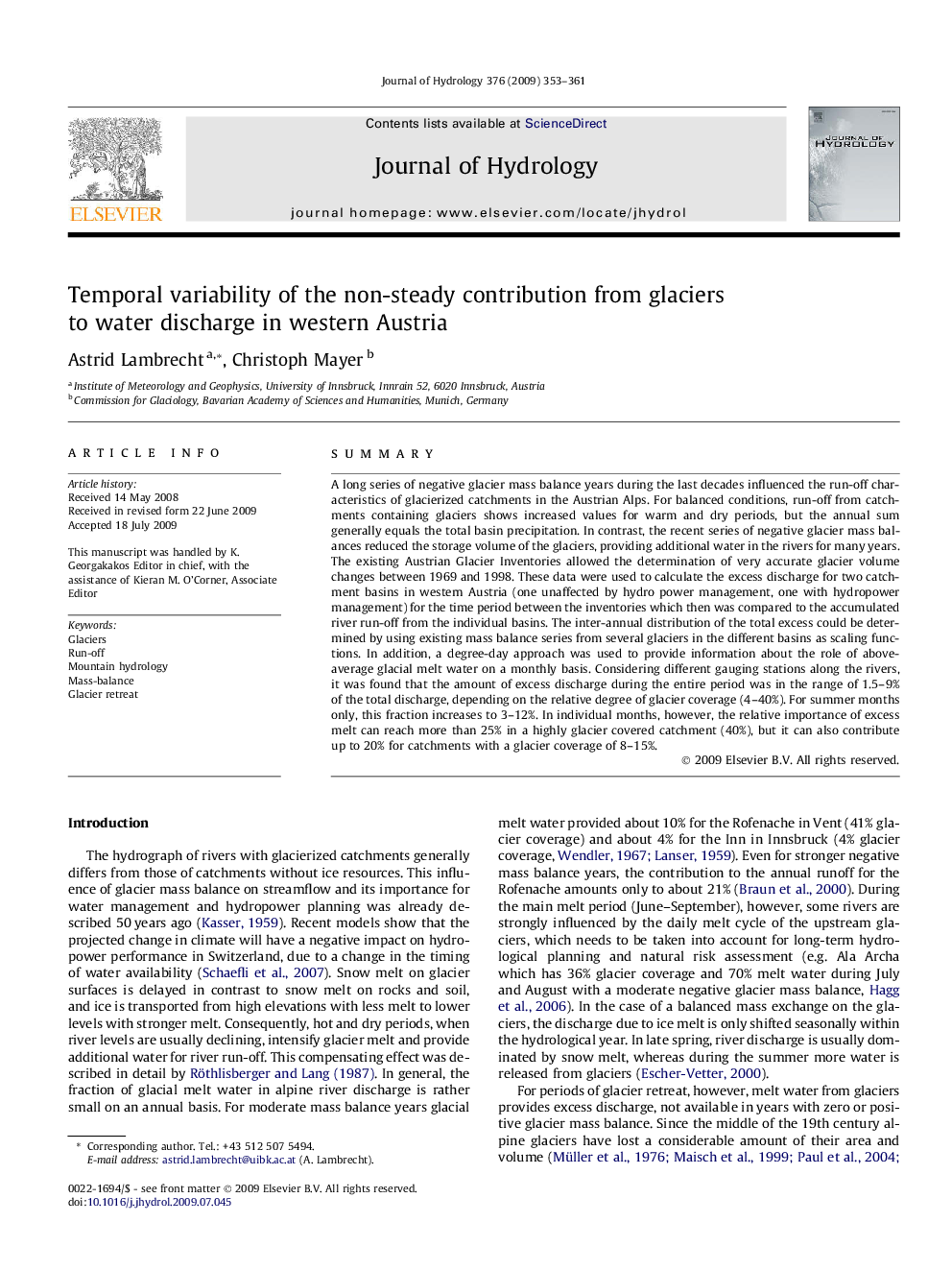| Article ID | Journal | Published Year | Pages | File Type |
|---|---|---|---|---|
| 4578603 | Journal of Hydrology | 2009 | 9 Pages |
SummaryA long series of negative glacier mass balance years during the last decades influenced the run-off characteristics of glacierized catchments in the Austrian Alps. For balanced conditions, run-off from catchments containing glaciers shows increased values for warm and dry periods, but the annual sum generally equals the total basin precipitation. In contrast, the recent series of negative glacier mass balances reduced the storage volume of the glaciers, providing additional water in the rivers for many years. The existing Austrian Glacier Inventories allowed the determination of very accurate glacier volume changes between 1969 and 1998. These data were used to calculate the excess discharge for two catchment basins in western Austria (one unaffected by hydro power management, one with hydropower management) for the time period between the inventories which then was compared to the accumulated river run-off from the individual basins. The inter-annual distribution of the total excess could be determined by using existing mass balance series from several glaciers in the different basins as scaling functions. In addition, a degree-day approach was used to provide information about the role of above-average glacial melt water on a monthly basis. Considering different gauging stations along the rivers, it was found that the amount of excess discharge during the entire period was in the range of 1.5–9% of the total discharge, depending on the relative degree of glacier coverage (4–40%). For summer months only, this fraction increases to 3–12%. In individual months, however, the relative importance of excess melt can reach more than 25% in a highly glacier covered catchment (40%), but it can also contribute up to 20% for catchments with a glacier coverage of 8–15%.
